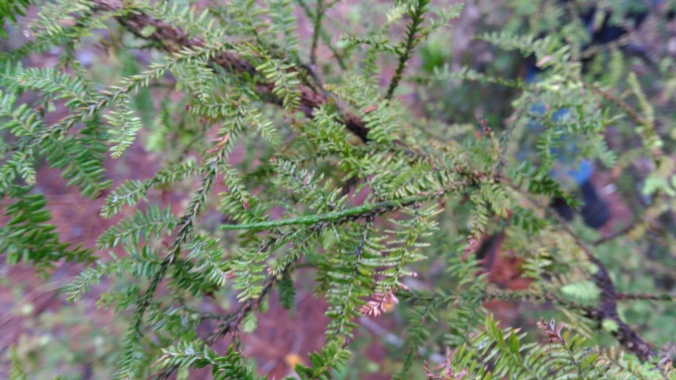Posted by Simon Connolly
Wellington is bloody windy. This is perhaps not the most original observation, but it certainly seems to be a correct one, particularly when your trip coincides with a severe weather warning. However, it was not the prospect of gale force winds that had me travelling south at the end of November. Ecologists from the length and breadth of the country, and beyond, were gathering for the New Zealand Ecological Society Conference, hosted at Victoria University.

The view from my accommodation (Yes, I did pick the worst day for dramatic effect)
The talks kicked off on Sunday at the conference’s student day, which was followed by three days of talks at the main conference. It would be folly to try and list all the amazing and interesting talks that were given (especially as there were over 100), but here are just a few of the highlights: the use of drones in sampling New Zealand’s epiphyte diversity; the history of the extinction of a native fish that smelled of cucumber; tadpoles that interact with the microbiome to regenerate their lost tails; mysterious fungivorous beetles; tracking New Zealand’s biodiversity with place names; the role of New Zealand’s flightless birds in seed dispersal; a myriad of talks and posters about orchids and their sexually deceived pollinators; why the straw breaking the camel’s back is more than an idiom in ecology; the drivers of social wasp abundance on New Zealand’s offshore islands; and the question of whether Kauri are thirsty at night (long time readers will note that the last three topics have been discussed on this very blog).
In amongst all this were my talks on my Master’s research (the subject of which has also been discussed on this blog). Like I said, I have not been active in the research space for very long and consequently this was my first time speaking at a major conference. The concept was a little overwhelming at first, but I soon warmed to the idea. I was most taken aback by the positive and informed response I received. Intelligent questions are one thing, but I was incredibly grateful to those who suggested improvements to my methods or offered advice from their own research and experiences.
However, a man cannot live on talks alone. Also included in my time at Wellington were two trips into the field. The first was a highly atmospheric night trip to Zealandia, an enclosed pest-free reserve near the heart of Wellington. Whilst this was blighted by the same foul weather as before, I could spend almost an entire post talking about this trip alone. Suffice to say that seeing creatures like Tuatara and Weta thriving in their natural habitat gives me some hope that all is not in vain. The second trip was to Manaaki Whenua Landcare Research’s Field Station, or at least to the far side of the swelled Orongorongo river from the field station. This trip taught me that a “short 1-hour hike” does not reckon with botanists’ ability to stop and discuss every plant.

A tuatara, inspecting the tourists from his burrow – Photo Credit: Mark Herse
All in all, my trip to Wellington was an enjoyable one, and I hope to revisit the NZES Conference in the future. Now enjoy a couple more wildlife photos.

Weta and a ‘gherkin’ slug (obligatory entomological photo) – Photo Credit: Kaavya Benjamin

A cryptic Stick Insect, found near the banks of the Orongorongo river (obligatory entomological photo 2)
 Simon is a Masters Student at the School of Biological Sciences, University of Auckland. His research is focused on threatened insects and he is supervised by Darren Ward.
Simon is a Masters Student at the School of Biological Sciences, University of Auckland. His research is focused on threatened insects and he is supervised by Darren Ward.
scon870@aucklanduni.ac.nz